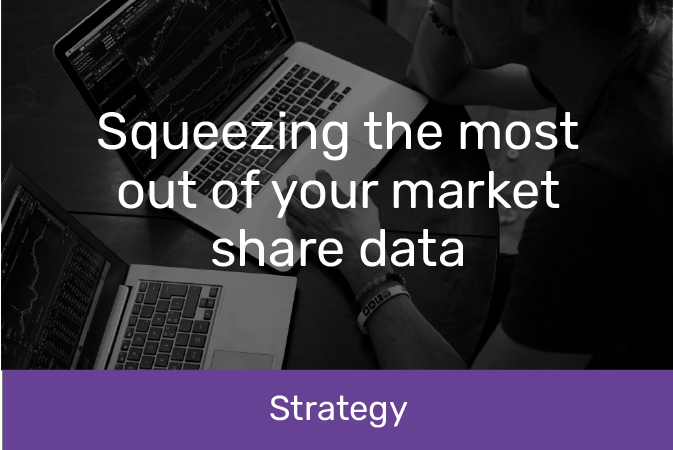
Squeezing the most out of your market share data
leverage the numbers
There’s no denying that growing revenues year-on-year is a fantastic outcome. However, it is only within the context of performance within an industry/market that a complete picture of success becomes apparent. Growing revenues by 5% is great. But not if your overall market grew by 50%…
Measuring a business against its competitors is not a new concept. Market share is one of the most common measures of success for larger organisations, yet we frequently see businesses struggling to utilise market share data effectively. Below are a few recommendations for how to get the most out of market share data:
 Fast data leads to fast decisions
Fast data leads to fast decisions
Managing the regularity at which you receive your data and your ability to respond is crucial. Having the ability to react to competitor activity every week but only receiving market share data monthly means missing out on opportunities to respond tactically. Conversely, a daily market share feed becomes more of a luxury than a need if your business takes weeks to do anything with the information.
 Integration is key
Integration is key
Market share becomes extremely powerful when combined with other data sources. Combining market share data with other data sets, such as competitor marketing or other promotional activity, will provide context to changes in market share and help your business understand which levers are moving the needle the most. As market share data tends to come from external data sources and external partners, it is also valuable as a trustworthy KPI; it can be less susceptible to the bias that you might see with more internally focused business metrics.
 Do we even know who we are up against?
Do we even know who we are up against?
Two main variables impact market share: business performance and competitor performance. With half of the equation dictated by the performance of other players in the market, investing time upfront to define this group is vital.
Just as important is ensuring this information is evident in the reporting when sharing it with the business. Different people within your organisation may have different opinions on who is a competitor and who is not. If decisions are being made based on this information (which is the primary reason for collecting and analysing this data), it is imperative that your teams agree on the competitor set and that the reports clearly articulate this information.
Another point to note is that markets evolve over time. Just because a brand or organisation wasn’t a competitor last year doesn’t mean they aren’t now. Make sure to regularly update your competitor set to reflect changes in the market. New innovations have an effect on even the most established industries.
 We are losing market share, now what?
We are losing market share, now what?
To understand the ‘why’ behind a change in market share, you need to aggregate the data at a level that makes sense for your organisation. If your market share data reports at a national level, but pricing decisions and marketing are regional, it will be almost impossible to understand what drives any changes. Key stakeholders should be able to drill through this data quickly. If the data is available, but the process to reach it is time-consuming and inefficient, it is less likely that this data will be considered in decision-making.
Losing market share?
Is your market share data meeting the requirements of your business? Datamine are experts in this area and have a range of market data options to meet your businesses requirements. Reach out and have a chat, we love talking data.
We've collaborated with many Australian and New Zealand business to see the potential within their market share data, fill out the form below to get in touch.














































